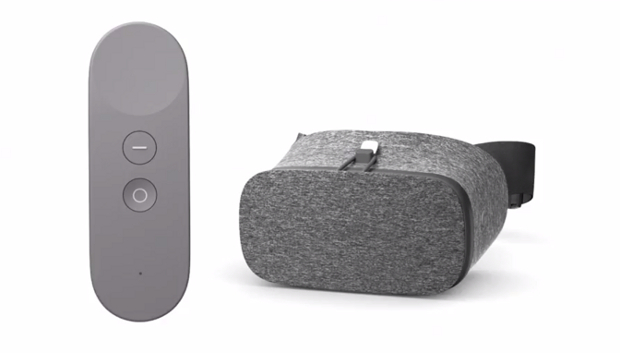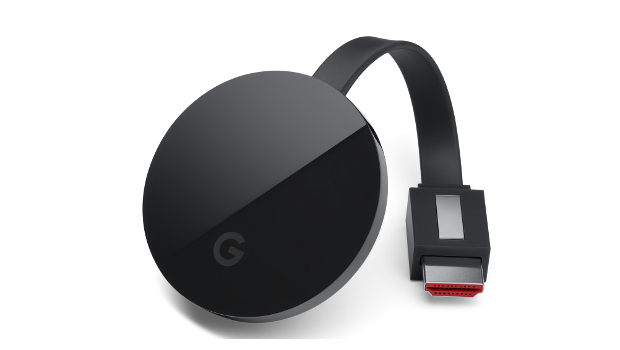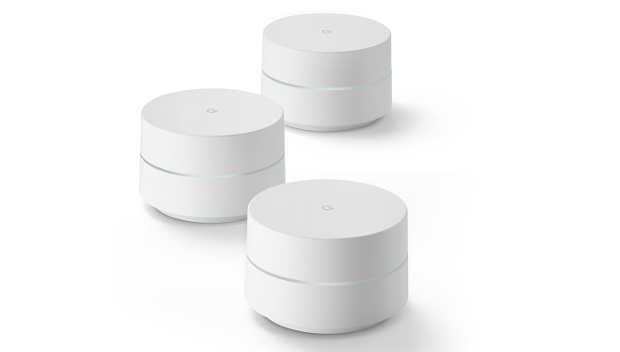Google on Tuesday launched several products under the mantra of Made by Google, including two Pixel smartphones that natively run a new Google Assistant built on recent advances in artificial intelligence to improve personalised, voice-capable searches.
Most of the new products had been hinted at for weeks. Here’s a rundown of what’s in and what’s out.
AI
Much of the focus of the event, which was livestreamed from San Francisco, was on Google Assistant. “The goal is to build a personal Google [search] for each user,” said Google CEO Sundar Pichai in opening remarks.
With the use of AI, Pichai said, search capabilities can be more personal and more like human speech. “We are evolving from a mobile-first to an AI-first world,” he said.
Google announced two new developer programmes to build Google Assistant into pretty much anything you can think of.
“Going back to Google’s earliest days we’ve always worked hard to create healthy open platforms,” said Scott Huffman, who leads the Google Assistant engineering team. “The Google Assistant will be our next thriving open ecosystem.”
The first new programme is called Actions on Google, which will launch in early December and allow app makers to build Google Assistant into their services. The Embedded Google Assistant SDK, meanwhile, is coming in 2017 and can put Google Assistant in pretty much any device you can think of.
Mobile
Another major theme of the event was Made by Google, which incorporates the idea of offering the best Google Android experience “by bringing hardware and software design together under one roof,” said Brian Rakowski, vice president of product management, in a blog. Previously, Google had relied more heavily on third party manufacturers for its Nexus line of phones, going back to the Nexus One, introduced in 2009.
The phones, which will come in 5″ and 5.5″ models, are reportedly manufactured by HTC for Google. Google also apparently decided to stick with the simple Pixel name for the different sized phones, even though it was reported they would be called the Pixel X and Pixel XL. Both will run Android 7.1 Nougat.
Both phones have an impressive set of specs, including a 12.3MP rear camera, a quad-core Snapdragon 821 processor, 4Gb of memory and either a 2,770mAh or 3,450mAh battery. While the storage is either 32Gb or 128Gb, Google said cloud storage of high definition photos and videos will be unlimited. Video stabilisation software was also demonstrated.
A live customer care feature is included for reaching out for technical help via phone or chat, with a screen-sharing option. There is also a ‘quick switch’ capability for transferring contacts, photos and messages from a phone on another OS to the new Pixel phone.
The phones come in three colours: Very Silver, Quite Black and Really Blue.
VR
While Google’s original Daydream VR renders bore an uncanny resemblance to Oculus Rift, the final Daydream View design embraced a wholly unique look thanks mostly to fabric-clad exterior. Google VR head Clay Bavor says the design was inspired by what people actually wear, not traditional gadgets. It features soft microfibers typically found in athletic wear, Bavor says, and Google actually partnered with clothing designers to nail the look and feel of the headset.
Initial sales of the Daydream View will be limited to a Slate colour, but the headset will also be available in Snow and Crimson in the future.
Google focused on simplicity and ease of use for Daydream View’s design, Bavor says. To that end, the headset weighs 30% less than similar devices – llike the Gear VR – and works nicely with eyeglasses. Getting the device up and running couldn’t be easier, either. You simply release the latch on the front, slip your phone into the headset, and close it back up. Daydream View and your phone then connect wirelessly, no fumbling with cables required. And when you’re done exploring digital worlds, the bundled made-for-VR Daydream controller slides securely into the area where your phone normally sits, so you don’t lose the tiny remote between sessions.
Google’s Daydream VR headset will sell for even less than Samsung’s $100 Gear VR when it launches in November, costing just $80.
Chromecast
The wildly-popular Chromecast streaming dongle is also getting an upgrade to handle 4K video and content from Netflix and Vudu. YouTube, Google Play Movies & TV is getting 4K support in November (but no word on HDR). Chromecast Ultra will also support Dolby’s flavour of HDR on televisions with Dolby Vision.
The upgraded internals should provide better performance as well, with Google claiming that content loads 1.8 times faster. Wi-Fi performance is supposedly improved, though it’s unclear how, given that last year’s Chromecast refresh added 802.11ac Wi-Fi.
Compared to the original Chromecast, the Chromecast Ultra is bulkier, but it’s still designed to plug directly into an HDMI slot, hanging freely from the television by a short cable. It also adds an ethernet jack for wired connections to a home network.
The new Chromecast will work the same way as the original: Instead of a dedicated remote control, you use your phone, tablet, or the desktop Chrome browser to control what’s happening on the big screen. Video and music services that support Chromecast will display a “Cast” button that initiates playback on the streaming dongle.
Existing Chromecasts and the Chromecast Ultra have a new trick, though: Using the newly-announced Google Home connected speaker, you can bark voice commands to start viewing YouTube videos and Google Photos through the television. Netflix will also support this feature soon, and other partners will be added later.
In the home
First revealed at Google I/O in May, Google Home will compete with Amazon’s surprisingly popular Echo product line for voice-activated control of the smart home. The price tag is attractive, and it has some features the Echo doesn’t, but Google still has a lot of work to do to catch Amazon.
Like the Echo, Google Home can recognise natural language and answer simple questions when it detects a ‘wake’ word (‘OK Google’ for the Google Home, ‘Alexa’ for the Echo). Google has a leg up on Amazon in this regard, as it arguably has the world’s best search engine, and the company has been working on speech recognition for many years longer than Amazon.
One of the most impressive things about Google’s demo today was the Google Assistant’s ability to respond to related follow-up voice commands without needing to say ‘OK Google’ again. During the demo, Google product manager Rishi Chandra asked, “What’s Adele’s real name?” Google Assistant provided the answer. Chandra then said, “How many Grammys has she won?” And it responded with an answer from Wikipedia. With the Echo, you need to repeat ‘Alexa’ with every request.
Google Home also be able to stream music and podcasts, report the news, set timers, make shopping lists that will appear on your phone, and more. In addition to YouTube Music, you’ll also be able to link your Spotify, Pandora, Google Play Music, TuneIn, and iHeartRadio accounts, and specify a default so you don’t have to specify ‘on Spotify’ every time you request a song or album. One area that Google has a significant advantage over Amazon is Google Home’s ability to link to Google’s Chromecast and Google Cast media streamers.
Wi-Fi
Google announced its second wireless router for the home.
While it’s not clear if Google Wifi is meant to replace the OnHub router the company launched just over a year ago, or is just designed to appeal to a different market, Google Wifi is a very different product. Where the OnHub was intended to be the only router in the home, buyers will be able to deploy one or several Google Wifi devices to blanket the home and eliminate dead spots.
The company is marketing Google Wifi as a modular, expandable system. One unit will cost $129 or you’ll be able to purchase a three-pack for $299 when the company starts taking preorders in November, with delivery scheduled for December. In this regard, Google’s product will similar to the Eero and Luma routers that are already on the market.
At launch, Google marketed the OnHub as a once and future central control point for the smart home. They packed it with multiple radios – Bluetooth LE, and ZigBee, in addition to dual-band Wi-Fi – and integrated support for Google’s own Weave (the protocol that Nest device use to communicate with each other). Google hasn’t made clear which, if any, of those features are in Google Wifi, or even if it will continue to offer the OnHub.
At today’s presentation, the company stressed how easy Google Wifi would be to set up and use, thanks to a mobile app. When multiple access points are deployed, the system will automatically instruct clients to connect to the access point offering the strongest signal.
The departed
Despite the new product announcements, behind the scenes a quiet massacre was taking place as Google eradicated all traces of several older devices from its online hardware store.
Some of the dead links discovered by Android Police come as no surprise. With the release of the Pixel and Pixel XL, the Nexus 5X and 6P flagships were sidelined, albeit with no word whether or not the Nexus line is officially dead.
Google also ditched the Mattel View-Master VR Starter Pack and Goggle Tech C1-Glass VR Viewer, another understandable move now that the company’s focused on Daydream for virtual reality endeavors – though it still lists the stock Google Cardboard viewer in the Google Store alongside the new Daydream View.
More startling is the removal of Nvidia’s Shield Android TV console. Nvidia’s box represented the high watermark for Android TV devices, oozing premium features (like 4K video support, a game marketplace and PC game-streaming) at a premium price. It was a taste of the future for those willing to pay for it.
The Dell Chromebook 13 also got the axe, though it is still listed as available on Dell’s website.
IDG News Service








Subscribers 0
Fans 0
Followers 0
Followers